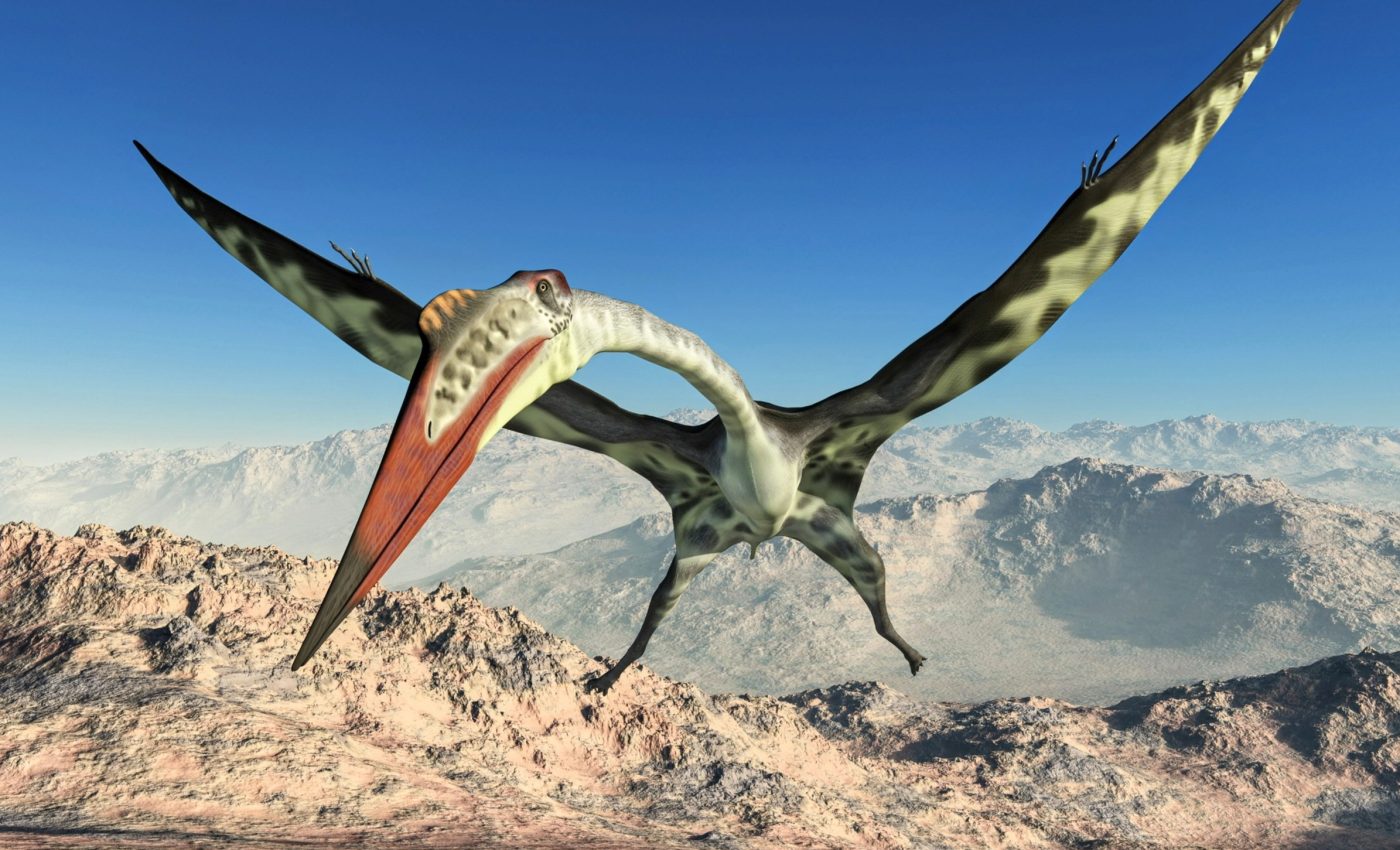
New fossil fills crucial gap in pterosaur evolution
Pterosaurs, the extinct flying reptiles that soared alongside dinosaurs, are among the most intriguing creatures in Earth’s history.
While some later species reached wingspans of up to 10 meters, early pterosaurs were significantly smaller, typically limited to around two meters.
Now, a newly described species, Skiphosoura bavarica, sheds light on the evolutionary steps that allowed these creatures to bridge this size gap and adopt advanced anatomical features.
The discovery, led by David Hone of Queen Mary University of London, represents a rare find that enhances our understanding of pterosaur evolution.
A pterosaur fossil unlike any other
The name Skiphosoura bavarica translates to “sword tail from Bavaria,” reflecting its distinctive stiff, pointed tail and the southern German region where it was unearthed.
What makes this fossil truly remarkable is its state of preservation. Nearly every bone of the animal has been recovered, and unlike most pterosaur fossils, which are typically flattened, this specimen is preserved in three dimensions.
With a wingspan of about two meters – comparable to a golden eagle – Skiphosoura provides a rare glimpse into the morphology of transitional pterosaurs.
“This is an incredible find. It really helps us piece together how these amazing flying animals lived and evolved. Hopefully this study will be the basis for more work in the future on this important evolutionary transition,” Hone said.
Broad classification of pterosaur fossils
For over 200 years, scientists have classified pterosaurs into two primary groups. Non-pterodactyloids were early pterosaurs with small heads, short necks, long tails, a short bone in their wing wrists, and a long fifth toe on their feet.
Pterodactyloids were a later species characterized by large heads, long necks, short tails, elongated wrist bones, and a short fifth toe.
While this broad classification was useful, it left significant gaps in understanding how pterosaurs transitioned between these forms. The discovery of in the 2010s helped address some of these questions.
These intermediate species revealed that the head and neck adapted first, with other anatomical changes following later. However, scientists were left wondering what occurred immediately before and after the darwinopterans.
Bridging the evolutionary gap
Skiphosoura bavarica offers vital clues. Evolutionarily, it stands between darwinopterans and pterodactyloids, displaying a combination of features from both groups.
It possesses the pterodactyloid-like head and neck characteristic of darwinopterans but also exhibits advancements such as a lengthened wrist, a shorter fifth toe, and a reduced tail – though not as pronounced as in later pterodactyloids.
This discovery, combined with a newly reconstructed evolutionary tree, allows researchers to trace the progression of anatomical changes in pterosaurs.
The study also places the Scottish pterosaur Dearc as a transitional species between early pterosaurs and darwinopterans.
Together, Dearc and Skiphosoura complete a nearly unbroken sequence of evolutionary adaptations, providing a step-by-step account of how pterosaurs evolved into the large, advanced forms seen in the later pterodactyloids.
Adaptations for larger sizes
Interestingly, both Dearc and Skiphosoura are unusually large compared to other species of their time.
This suggests that the adaptations that enabled pterodactyloids to achieve enormous sizes – such as larger heads and longer necks – began appearing in transitional forms like Skiphosoura.
These changes likely offered advantages such as improved flight capabilities and more efficient foraging.
Analyzing the pterosaur fossil
The fossil preparation and analysis were feats of modern technology and expertise. Unlike typical flattened fossils, the three-dimensional preservation of Skiphosoura required meticulous work.
“As a preparator, I have worked on more than 60 pterosaur specimens from Solnhofen limestone,” said study co-author Stefan Selzer, who prepared the specimen.
“I recognized during the final prep this specimen showed features that combined characteristics of both major groups of pterosaurs, with the shortened tail as the most important diagnostic feature.”
Digital imaging also played a critical role in analyzing the fossil.
René Lauer of the Lauer Foundation for Paleontology, Science, and Education explained: “The specimen was disarticulated with bones of varying quality often overlaid upon one another.”
“Digital photography of the specimen taken in both visible and UV light significantly aided in the process to identify these elements and to better analyze finer details that were not discernible in normal daylight alone.”
Redefining pterosaur evolution
The discovery of Skiphosoura bavarica provides a detailed roadmap of pterosaur evolution, offering insights into how these creatures developed the traits that would eventually enable them to dominate the skies.
By clarifying the sequence of anatomical changes, this fossil represents a major milestone in understanding the evolutionary history of pterosaurs.
“Pterosaurs have long been symbols of the unique life of the past. Skiphosoura represents an important new form for working out pterosaur evolutionary relationships and by extension how this lineage arose and changed,” said co-author Adam Fitch, a paleontologist at the University of Wisconsin-Madison.
As researchers continue to study this exceptional find, they hope to uncover even more details about how pterosaurs adapted and thrived in prehistoric ecosystems.
“This is an incredible find. It really helps us piece together how these amazing flying animals lived and evolved,” Hone said.
With Skiphosoura bavarica, scientists have a clearer view of the evolutionary journey that transformed small, early pterosaurs into the majestic flying reptiles of the Mesozoic era, cementing its role as a key link in the story of life on Earth.
The research is published in the journal Current Biology.
—–
Like what you read? Subscribe to our newsletter for engaging articles, exclusive content, and the latest updates.
Check us out on EarthSnap, a free app brought to you by Eric Ralls and Earth.com.
—–













